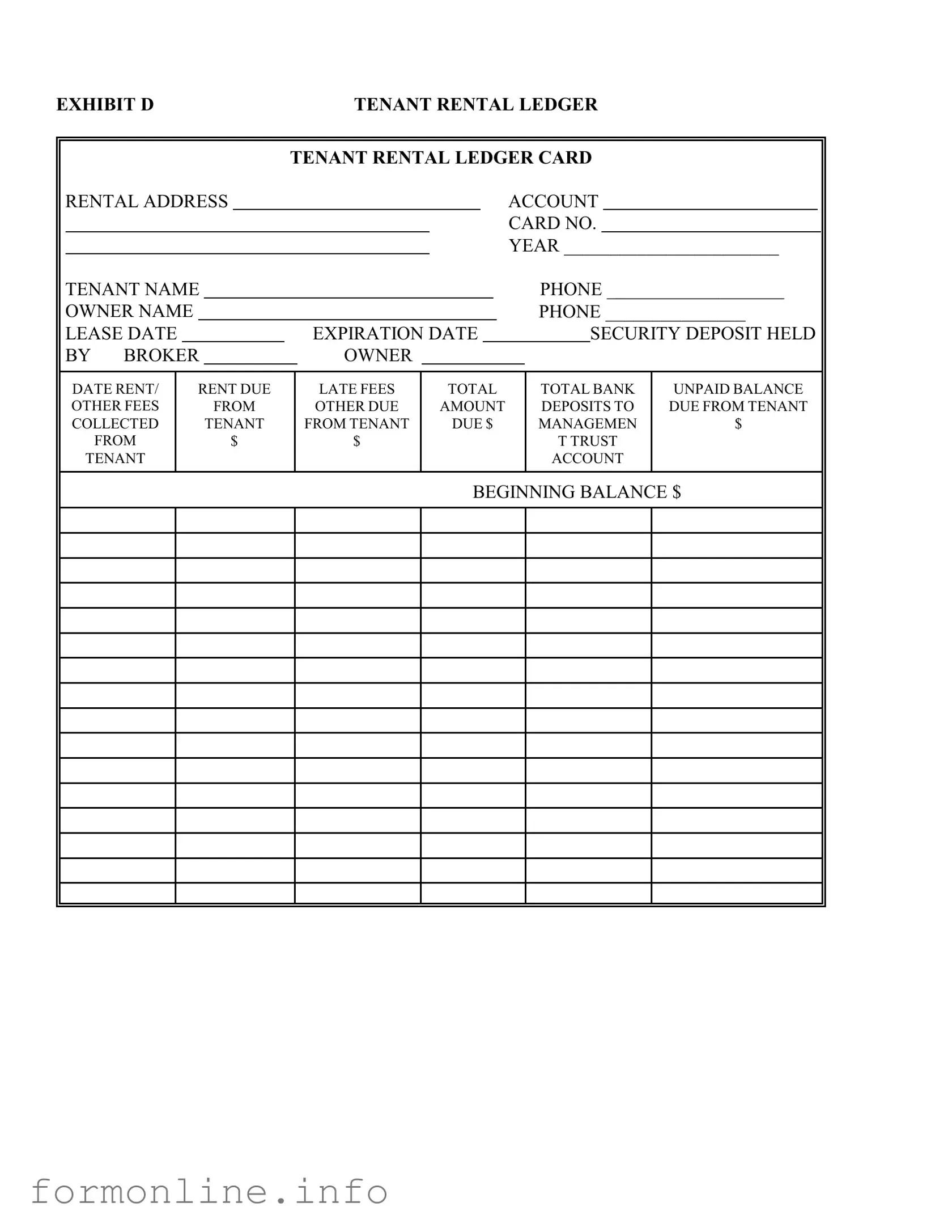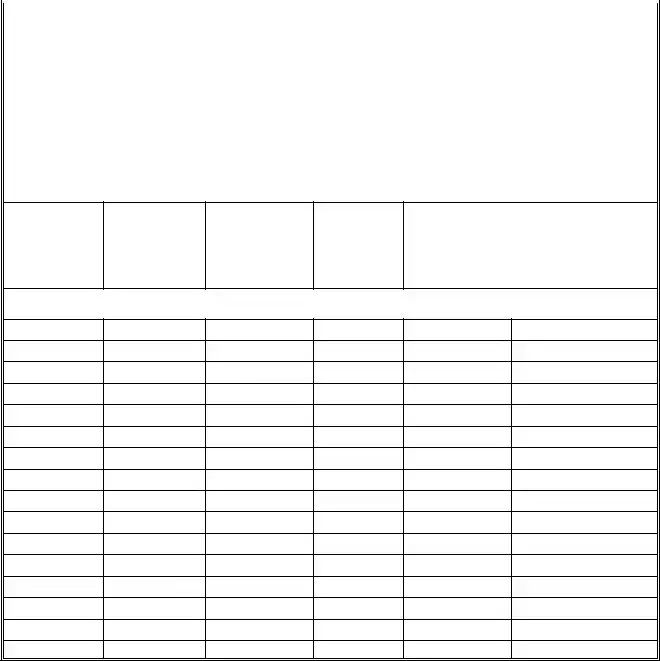Fill Out a Valid Tenant Ledger Card Form
The Tenant Ledger Card is a vital document that helps landlords and property managers track rental payments and other financial transactions related to a tenant's lease. It includes essential information such as the tenant's name, contact details, lease dates, and a detailed account of amounts due, collected, and any outstanding balances. Understanding how to accurately fill out this form is crucial for maintaining clear records and ensuring smooth landlord-tenant relationships.
Ready to get started? Fill out the form by clicking the button below!
Prepare Form Online

